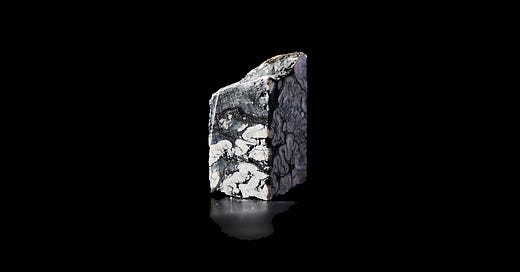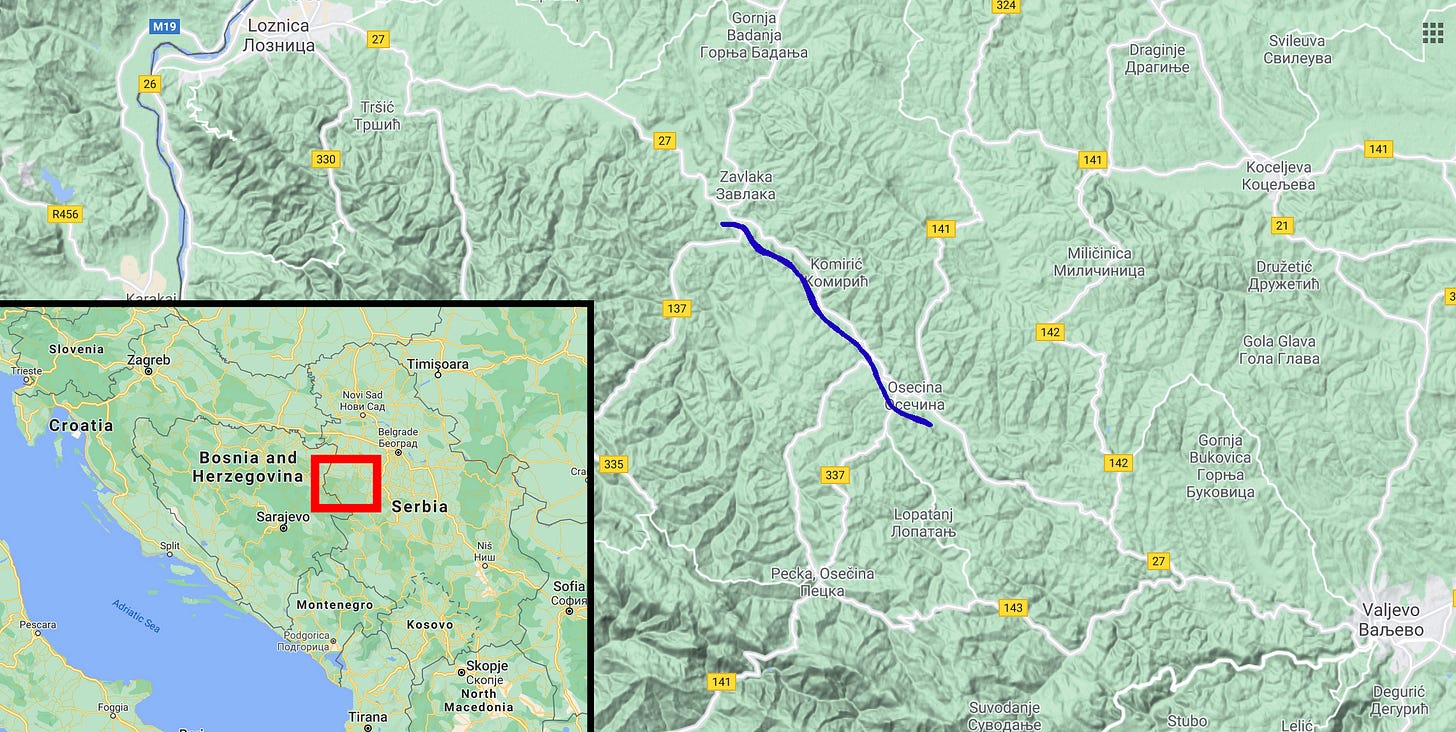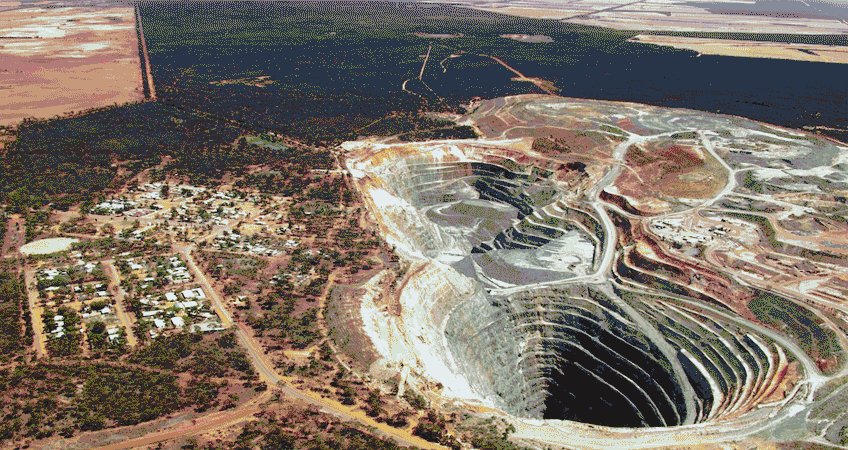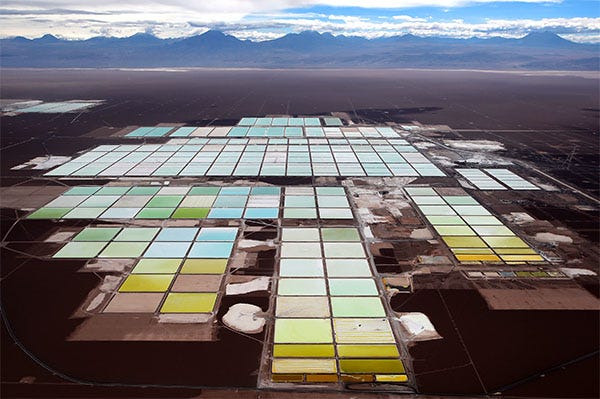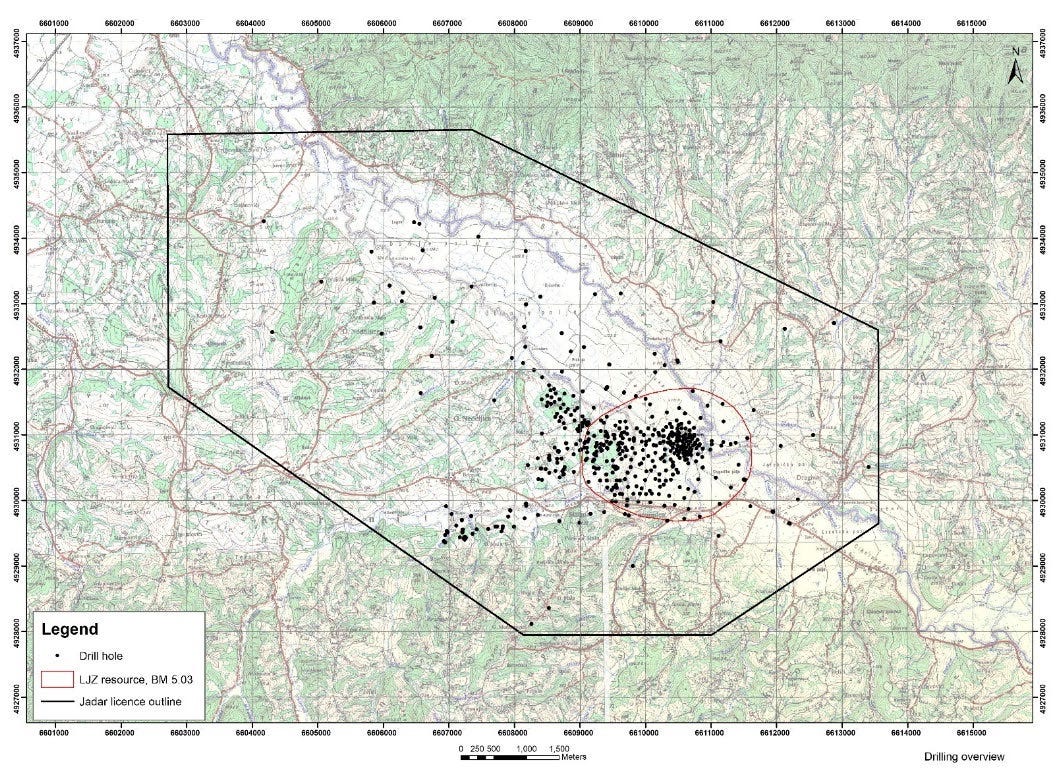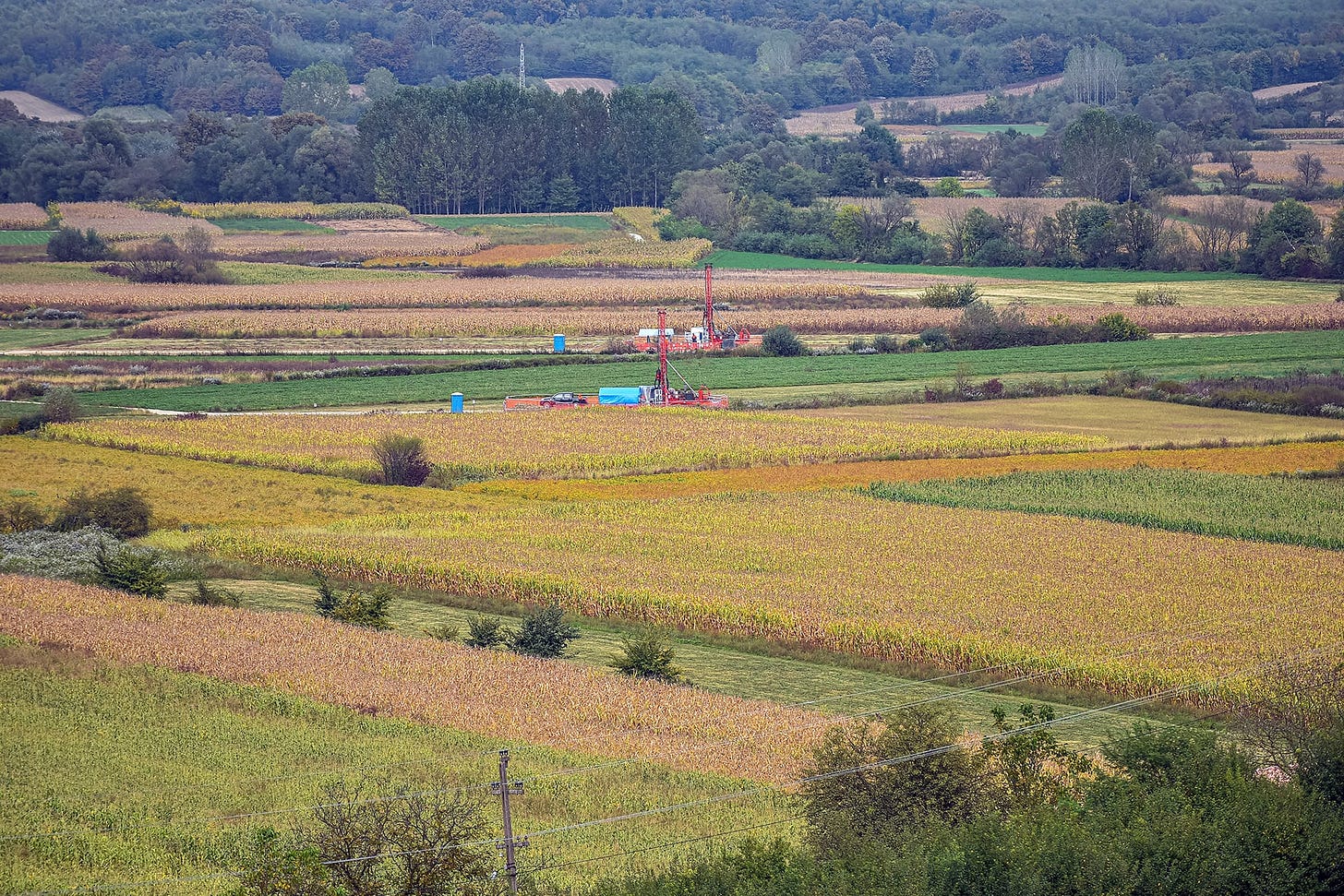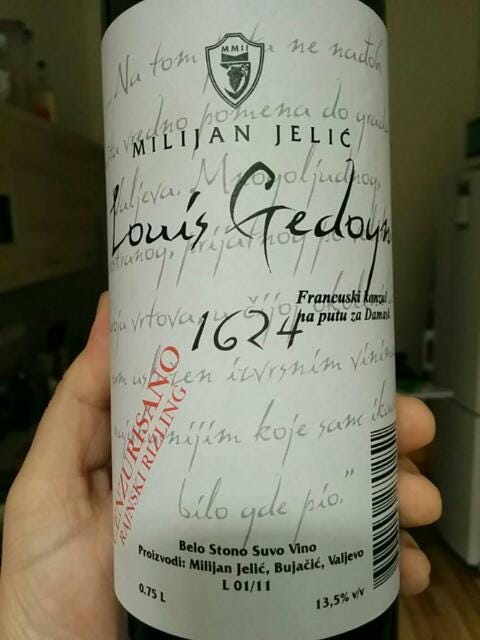XXXII. Tomorrow's oil
Lithium is the key mineral for the future of technology and for electric-vehicle batteries. Serbia hosts one of the largest deposits in the world, but the environmental risk is very high
Hi,
welcome back to BarBalkans, the Italian newsletter whose aim is to give a voice to the Western Balkans’ stories, on the 30th anniversary of the Yugoslav Wars.
How many times have you heard the expression “[random color] gold”?
Oil is known as black gold. Water as blue gold. Cocaine as white gold.
We will not add another “gold” to the list. However, at the dawn of the digital age, you have to know that one specific material is going to be tomorrow’s oil:
lithium.
And you have to know as well that one of the largest deposits in the world is in the Western Balkans. You have to go to Serbia and look for a mineral that you can find only there:
Jadarite.
Wherever there is a [random color] gold, there a war breaks out.
Will Europe be able to prevent a fight for this crucial raw material?
The largest deposit in Europe
Let’s start from the beginning.
We are in Western Serbia, in Mačva district, at the border with Bosnia and Herzegovina. The closest towns are Loznica and Valjevo.
In 2004 some geologists discovered a new mineral along the Jadar river.
They discovered a lithium sodium borosilicate mineral. And they obviously called it Jadarite.
Its chemical formula is LiNaSiB3O7(OH). Fun fact: Jadarite’s chemical formula is similar to the one invented for the fictional Superman’s kryptonite («sodium lithium boron silicate hydroxide with fluorine»). Unlike the fictional material, Jadarite does not contain fluorine and it does not glow green.
The Jadarite deposit near the town of Loznica is unique on Earth. At the same time, it is also the largest deposit of lithium in Europe and one of the largest in the world.
According to some detailed studies, the Jadar mine has reserves amounting to 136 million tons, with a high concentration of lithium and boron.
Borates are used in many everyday products: detergents and cosmetics, smartphone glass, solar panels and fertilizers.
But above all, the Jadar mines would cover 10% of the global demand for lithium, if the mining operations started.
The new “gold rush” for lithium
So, worldwide one kilogram of lithium out of ten could be mined in Serbia.
This critical metal is expected to face increasing demand in the coming decades. In 2020, a report by the World Bank Group predicted that lithium production could increase by nearly 500% by 2050.
This raw material is a vital component for clean technologies, such as electric vehicles and battery storage.
The “environmentally friendly car” would not exist without lithium batteries (but neither would our smartphones).
In the digital decade, lithium will play an essential role in the transition to a low carbon economy.
The Jadar mine is a high-quality and long-lasting deposit, a potential supply of raw material for several decades.
This is why Serbia may become the new geopolitical crossroad.
The country is at the doorstep of the European Union, one of the fastest growing electric vehicle markets in the world. At the same time in Serbia there are also Russian and Chinese business interests.
Where does lithium come from now?
Global reserves are estimated to be around 18 million tons.
With 8 million tons, Chile has the largest lithium deposit known to date. Then it is Mexico (4.5), Australia (2.7), Argentina (2) and China (1).
In Europe, there are small quantities in Portugal and in Spain.
According to the United States Geological Survey, the main lithium suppliers in 2018 were Australia (51 thousand tons), Chile (16 thousand) and China (8 thousand).
Australia has gained the leadership in recent years through hard-rock lithium mines, real sinkholes.
The same kind of mining operations is expected to take place in Mexico, in the Sonoran desert, starting from 2023. It is estimated that it will be capable of producing between 17 and 35 thousand tons of lithium carbonate annually, for two decades.
In Chile and Argentina you can find lithium in salt flats.
The mineral is in the underground salt lakes. In order to extract lithium from brines, the salt-rich waters must first be pumped to the surface into a series of large evaporation ponds, where solar evaporation occurs over a number of months.
However, there are many investigations into the environmental damage of lithium extraction in salt flats.
According to some studies, two million liters of water are required for every ton of mineral extracted in the process. Especially in Chile, lithium extraction is causing the drying up of rivers and aquifers and it is expanding the desert to surrounding lakes and humid areas.
But money is money and the “ecological transition” seems to be unstoppable. And not only in Chile.
Global interests
Let’s go back to Serbia.
Since 2004 the British-Australian mining giant Rio Tinto Group has been targeting the area of the Jadar river. At the time of the discovery of the new mineral and deposit, the geologists were working for the multinational company.
The company has improved its efforts to speed up the start of mining operations over the years.
Four years ago, the Serbian government signed a memorandum with Rio Tinto to modify the project of a road that will connect Loznica to Valjevo. In this way, all the infrastructures needed by the company will be ready on time.
As of February 2020 the Anglo-Australian property had invested more than 200 million dollars in the Jadar project. By the end of this year, when the feasibility study will be completed, the investments should double.
If approved, the project will consist of an underground mine, sustainable industrial processing and waste facilities as well as associated infrastructure. The facility’s construction would commence in early 2022 and it would take up to four years.
It will be capable of producing approximately 55 thousand tons of lithium carbonate every year, as well as 160 thousand tons of boric acid and 255 thousand tons of sodium sulfate as by-products.
Rio Tinto spokespersons excluded possible environmental damage:
«At Jadar, we have already conducted 12 environmental studies and more than 23 thousand analyses of soil, water, air and noise. These will help develop the Strategic Environmental Assessment (SEA), allowing us to build a comprehensive picture of the environment before mining begins, predict the impacts of our future operations and define measures to minimize them».
Moreover:
«The Jadar mine and processing facility will generate two types of waste: rock material from the underground mine and industrial waste produced when processing jadarite. Both types of waste will be mixed into a singular solid mass called filter cake, similar in structure to the original rock material. We plan to use approximately 20% of filter cake as backfill for the underground mine. The remaining filter cake will be transported to a waste storage area, that will not be toxic to people or the environment».
All clear, right? No environmental danger, new jobs and economic development for the local community, as well as roaring trade for Rio Tinto.
A win-win strategy.
Or maybe not.
There are many reasons for doubting about this project and the resistance of citizens and civic committees is increasing.
First of all, it is not clear how lithium and boron will be extracted from Jadarite, neither the chemical composition of the “filter cake” that will fill the underground mine.
Secondly, it is not known where the waste storage area will be located. A cocktail of chemicals used to extract lithium could infiltrate rivers, streams and drinking water supply sites.
Thirdly, climatologists predict that Western Serbia will be exposed to climate change, drinking water shortages, droughts and floods. Meanwhile, Rio Tinto expects to consume 8 thousand cubic meters of water per day: that means more than all the water in the Oceanografic aquarium in Valencia. Everyday.
In addition, there is the economic issue. Serbia might recover 5% of the profits, but lithium is not yet included in Serbian mining laws.
And finally, the impact on local society. Western Serbia is a relatively poor region and its economy depends on farming, beekeeping and tourism. Activist Žaklina Živković explains the opposition of civil society:
«A project like this would destroy any prospect of sustainable development. Even with advanced technologies, lithium extraction has a huge impact on groundwater rivers, soil and air quality. I don’t see how a cost/benefit analysis may demonstrate that citizens will benefit from this project».
Have you ever though about the value of tomorrow’s oil, if a new deposit was discovered beneath your feet?
[Random color] gold wars take no prisoners.
In Serbia, a fight has just begun.
Pit stop. Sittin’ at the BarBalkans
We have reached the end of this piece of road.
In order not to forget the great naturalistic and environmental value of this territory, we sit at our bar, the BarBalkans.
Here, we discover that Western Serbia is a centuries-old wine region.
Several historical testimonies report it, including the words of Louis Gedoyn, the French Consul at Alep (Syria).
During one of his trips between Paris and Alep, the Consul travelled through the Western Balkans. On January 23, 1624, he wrote down on his journal:
“On that trip [from Belgrade to Alep] I have not found anything worth mentioning but the Valjevo town. A town with a lot of population, vast, pleasant for a great number of gardens, where I was served with excellent wines, the most delicious that I have ever tasted”.
Let’s continue the BarBalkans journey. We’ll meet again in a week, for the 33rd stop.
A big hug and have a good journey!
BarBalkans is a free weekly newsletter. Behind these contents there is a lot of work undertaken. If you want to help this project to improve, I kindly ask you to consider the possibility of donating. As a gift, every second Wednesday of the month you will receive a podcast with an article about the dissolution of Yugoslavia.
If you want a preview, you can listen BarBalkans - Podcast every month on Spreaker and Spotify!
As always, I thank you for getting this far with me. Here you can find all the newsletters.
If you want to help me to make this experience grow, you can invite whoever you want to subscribe to the newsletter:
Pay attention! The first time you will receive the newsletter, it may go to spam, or to “Promotions Tab”, if you use Gmail. Just move it to “Inbox” and, on the top of the e-mail, flag the specific option to receive the next ones there.
BarBalkans is on Facebook and Instagram, while on Linktree you can find the updated archive.

